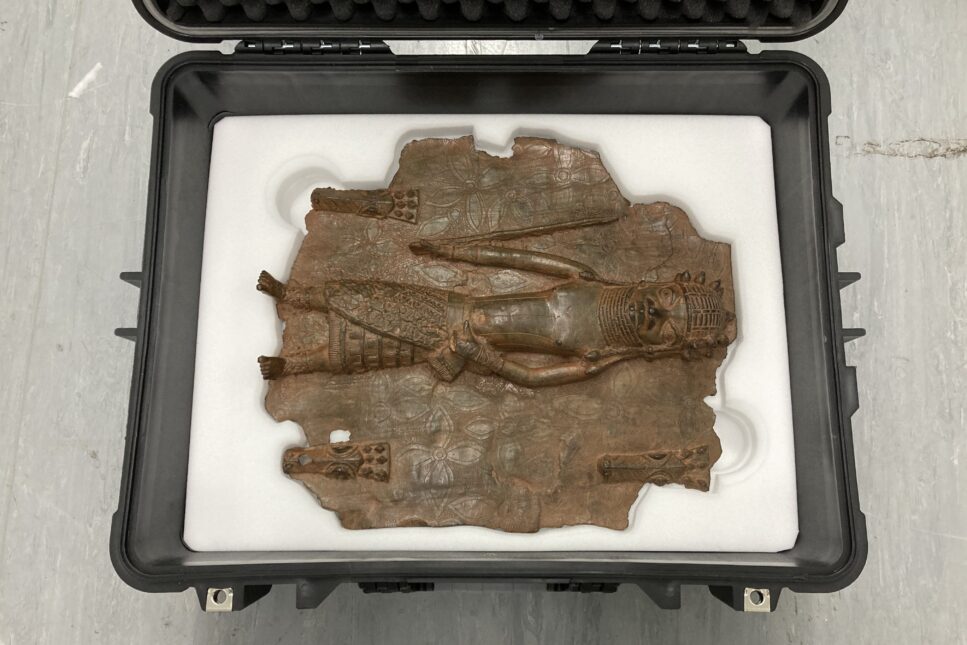
Image: Packing of a Benin bronze plaque depicting Oba Orhogbua (circa 1550 – 1578), in preparation for physical repatriation. Courtesy of Phil Sofer.
Written by Ruth Clapham, Assistant Registrar, Science and Industry Museum, Science Museum Group
Packing for repatriation: Considerations in packing six Benin objects for physical repatriation to Nigeria from the Horniman Museum & Gardens
One of the last talks of the day came from Phil Sofer and Peronel Craddock about the physical repatriation to Nigeria from the Horniman Museum and Gardens. This talk differed to the others as it focused on the detail and physicality of the move.
Peronel explained that it is not a secret that the Horniman’s collections have a colonial context. Recently the museum had undertaken research projects focused on their African collections, mapping them against military campaigns and scientific expeditions that happened in the continent. These six objects were part of a group of 72 objects that were taken by force from Benin City in 1897 and were being formally transferred back to Nigeria. The Horniman spoke to the local Nigerian diaspora and there was a consensus that the objects should be returned.
Unlike other museums that are non-departmental public bodies, the Horniman reports to the Charity Commission so it has different restrictions around transfers, but there was still a need to enact a careful communications plan, and a thorough transfer process and proposal over 12 months, which culminated in the official transfer ceremony in November 2022.
Phil went on to describe the bespoke packing that was created for the return of the bronzes, beginning with the usual assessments that are made for packing loans for transport. The question must be asked if normal packing would apply to this occasion as there was no venue the objects would be going to as such. Usually, full international specification crates would be used with boxes within the crates. However, the objects were being passed over in the ceremony in November and taken away at the end of this event as diplomatic baggage rather than with a transport agent. This gave the parameters of what the packing needed to look like: intuitive and portable. Phil decided on using rolling waterproof hard cases that are often used for cameras and filming equipment. Being made of polypropylene copolymer (PPC) they are a softer plastic with impact strength and have a watertight seal around the lid. The positioning of the handle and the wheels dictated the orientation of the bronzes within. The original foam in the cases was removed and replaced with plastazote sheets in layers that used handheld cutouts for easy and intuitive removal. These were numbered sequentially, and instructions were provided. These cases also provide useful storage for when they reach their destination as well as for travel. The instructions provided with the cases needed to be straightforward, so simple pictures showed each step, an easy way around language barriers!
Overall, three cases were used for six objects, and these were transferred in a ceremony on the 28th November 2022 to Prof. Abba Tijani, Director-General of Nigeria’s National Commission for Museums and Monuments. As some of the objects were on display at the Horniman, these gaps needed to be considered. The case now shows empty mounts with further interpretation about their return. The Horniman is currently in their second phase of consultation on the return of further objects to Nigeria.

 Instagram
Instagram  LinkedIn
LinkedIn  Twitter
Twitter  My Account
My Account